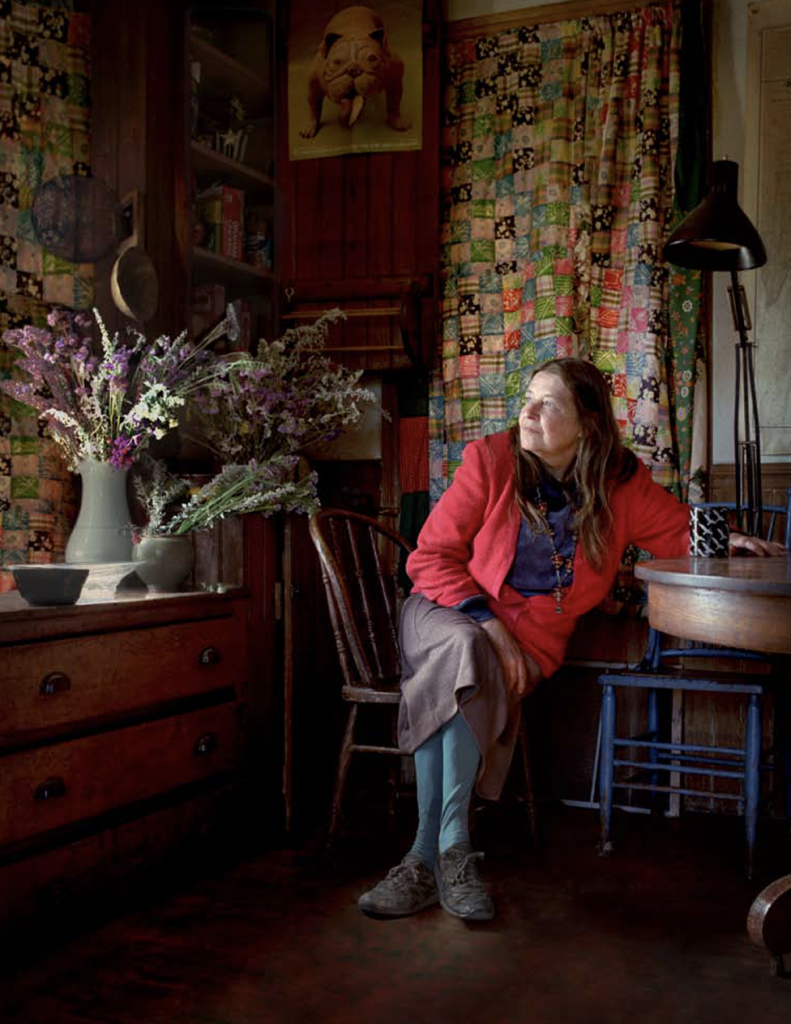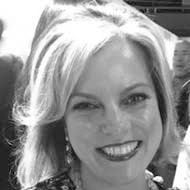What is going on there?
That’s the question market observers asked after a vibrant abstract canvas painted six decades ago by little-known artist Lynne Drexler soared to $1.2 million at a Christie’s off-season auction last month. More than 16 bidders propelled the work to 12 times its presale estimate of $40,000 to $60,000.
The price was mind-boggling for an artist who lived most of her life in obscurity, overshadowed, like many women of her generation, by a husband. She never had much of a career, showing here and there but rarely in New York City, whose hustle and bustle she eventually traded for the austere beauty of Monhegan, a small, rocky island off the coast of Maine.
There, amid harsh winters and touristy summers, Drexler spent her last 16 years painting daily, listening to the opera on the radio, and holding court at Jack Daniels-fueled salons. In the process, she filled her rickety white house with countless canvases. Her most inventive body of work—ecstatic abstracts created from torrents of vibrant brushstrokes, small and precise—was only discovered after her death, in 1999.
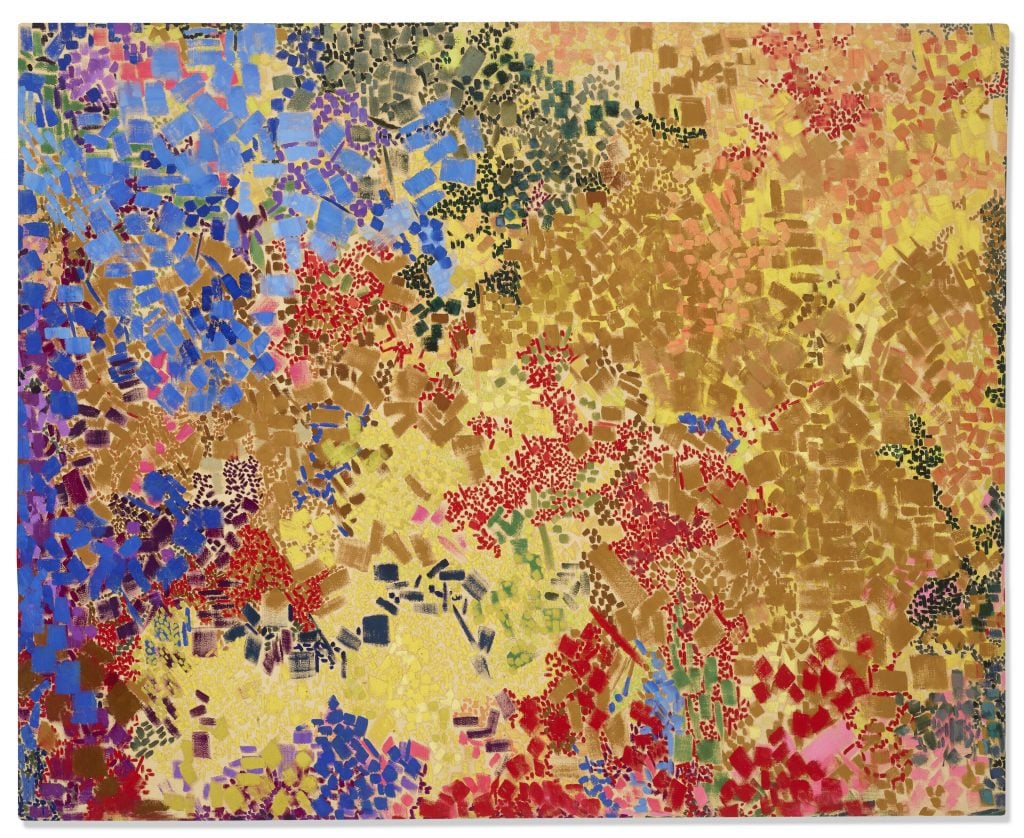
Lynne Drexler, Flowered Hundred (1962). © Estate of Lynne Mapp Drexler. Courtesy of Christie’s.
A second-generation Abstract Expressionist, Drexler’s star is rising as the contribution of female artists is being written back into the mainstream canon of art history (and the art market). The past few years have seen new records for Lee Krasner, Joan Mitchell, Alma Thomas, and Helen Frankenthaler, as well as Yayoi Kusama and Agnes Martin.
Drexler’s posthumous rise serves as a riposte to the idea that there are no more artists left to “rediscover.” Those who knew her just wish she could have been here to see it.
‘It Almost Became a Tempest’
Before 2020, none of Drexler’s paintings had sold at auction for $10,000, let alone $1 million.
Something started to change that year, when a 1966 green painting fetched a quadruple-estimate $26,000 at Barridoff Auction in Portland, Maine. Since then, her work has consistently fetched five- and six-figure sums; most recently, $150,000 for PinKing 1970 at Barridoff on March 19. One of her paintings is now in the collection of John Legend and Chrissy Teigen.
“These women of the 20th century, who are related to the second movement of Abstract Expressionism, were so undervalued and under-circulated that it almost became a tempest when they started to be recognized,” said Michael Rancourt, who manages the Drexler estate, who has never before spoken to the press. Along with figures like Grace Hartigan and Yvonne Thomas, “Lynne is fortunate to be part of it.”
The record-setting Christie’s painting, Flowered Hundred (1962), was deaccessioned by the Farnsworth Art Museum in Rockland, Maine. “It’s terrific that she’s finally getting her due,” said Christopher Brownawell, the museum’s director.
Drexler was born in 1928 in Newport News, Virginia and remained a Southern lady until her death. “She could curse like a pirate, but she judged people by their manners,’’ a friend recalled in a catalogue essay.
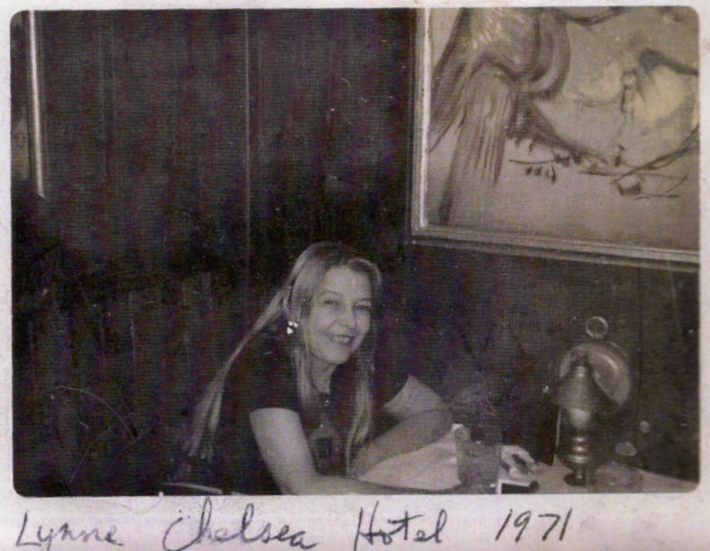
Lynne Mapp Drexler at the Chelsea Hotel, 1971. Photo: John Hultberg. © Estate of Lynne Mapp Drexler.
After attending the College of William and Mary, she came to New York in the 1950s to study with Robert Motherwell at Hunter College. She also took studio art classes with Hans Hofmann. She lived in the Chelsea Hotel and shared her downtown studio with painter Seymour Boardman.
In the early 1960s, she married fellow artist John Hultberg, whose large-scale Surrealist compositions won him the support of legendary gallerist Martha Jackson. She placed his works in top museums, paid for his (and Drexler’s) art supplies, and bought him a house on Monhegan Island, according to curator Tralice Bracy.
Jackson wasn’t particularly interested in Drexler’s work. “She wasn’t acknowledged as a painter, certainly not as a great painter,” Rancourt said. “She was the child in the corner, basically.”
Anita Shapolsky, a veteran New York art dealer, met Drexler while visiting Hultberg on the island in the early 1980s. She was unaware of Drexler’s Ab Ex phase. “She was a little angry at life,” Shapolsky recalled. “There were marital problems. At the time she was doing small paper pictures of nature for the tourists who came to the island.”
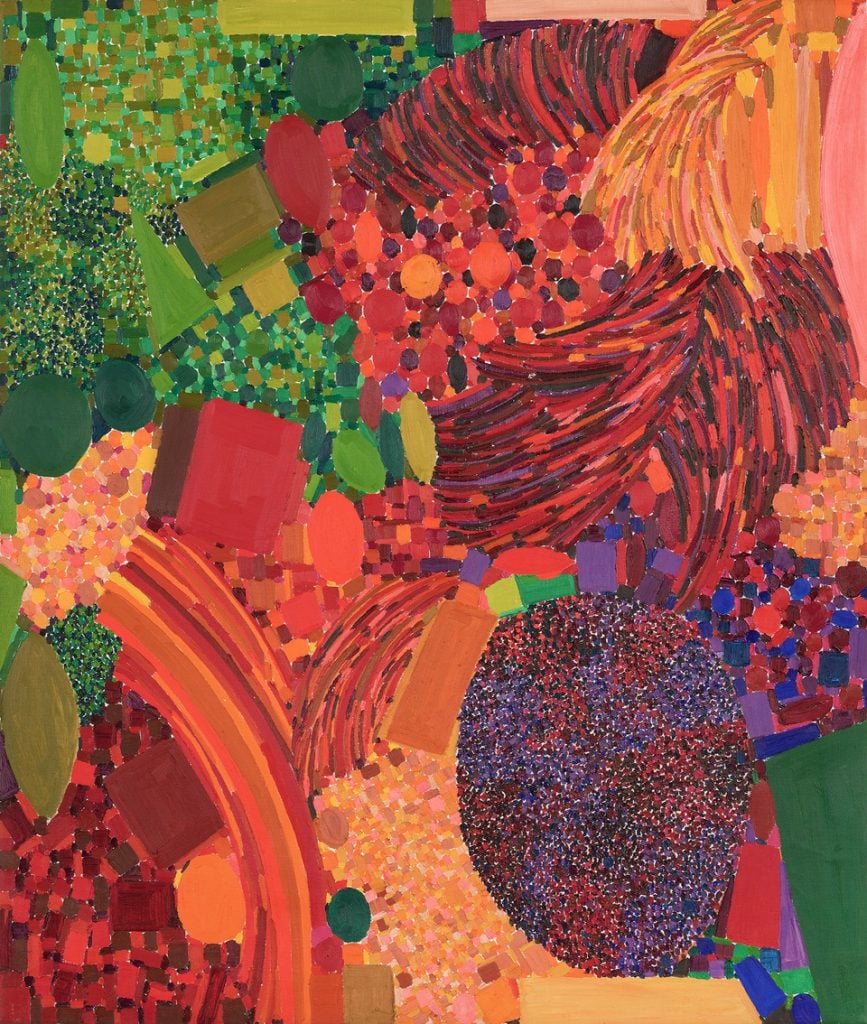
Lynne Mapp Drexler, Transported Blossems (sic) (1966). © Estate of Lynne Mapp Drexler. Courtesy Berry Campbell, New York.
Drexler would refer to herself as “a handmaiden to the genius,” Bracy said. “She would say, ‘I don’t know why they didn’t understand my work.’”
Ironically, Hultberg’s fame seems to be a thing of the past just as his wife’s profile is growing. His auction record is $7,500; in January, his Display (1958) fetched just $1,680.
The Discovery of a Lifetime
Drexler was prolific while living on Monhegan, painting from 9 a.m. to 4 p.m. every day. “You weren’t supposed to stop by,” Bracy said.
She began a new series each year, selling the works for as little as $50 when tourists would arrive for the summer. She documented her output neatly in spiral-bound notebooks. Income from sales “barely covered her materials,” Rancourt said.
Few had a sense of the true depth of Drexler’s oeuvre. On her first visit to the artist’s house in the ‘90s, Bracy walked down a darkened hallway toward a brightly lit kitchen. Along the way, she stumbled. As her eyes acclimated, she realized she had bumped into stacks of canvases, lined up along the entire length of the hall.
When Bracy became a curator at the Monhegan Museum, she asked Drexler to sit down for an oral history project. “She had a whole binder of slides with her,” Bracy said. As it turned out, there were even more paintings—all rolled up in the basement.

Lynne Mapp Drexler, Misting (1961). Collection of the Portland Museum of Art, Maine. Gift of Harry T. Bone and Barbara and William Manning, 2004. © Estate of Lynne Mapp Drexler.
It wasn’t until after the artist’s death—two days before the new millennium—that Bracy saw those works firsthand. They were rolled on huge sonotubes, typically used for pouring cement in construction, and had been set up on crates in Drexler’s basement for almost two decades.
As they were rolled out, the interplay of color blinded the small crowd. “No one on the island had seen these works before,” Bracy said. “There was so much excitement around it.”
In 2008, Bracy organized the first museum exhibition of Drexler’s work, “Lynne Drexler: Painter,” at the Monhegan Museum that later traveled to Portland Museum of Art. In the process, she managed to record, for the first time, exactly what Drexler created every year.
After her Ab Ex period in the ‘50s and ‘60s, she moved onto themes of nature and music. (In 1982, she painted trees and laundry; in 1984, she did trees, ocean and rocks; in 1987, it was pumpkins and seascapes.) “Her daffodil series in 1996 was extraordinary,” Bracy said.
Collectors Take Notice
For the past 16 years, Drexler’s legacy has been the project of Michael Rancourt, a former gallery owner in Portland, Maine. He has stayed firmly behind the scenes until now, preferring to sell work and organize exhibitions through a handful of dealers. The estate is currently represented by Berry Campbell Gallery in New York.
“I knew from the very beginning that this day would come because Lynne is an incredible painter,” Rancourt said. “Her work speaks not only to an art collector but to a regular person. She wasn’t trying to be a famous artist. She followed her heart. And she simply painted.”
One of those collectors is Saara Pritchard, a former rainmaker at Christie’s and Sotheby’s. Two years ago, in the depths of the pandemic, Pritchard spotted Drexler’s colorful canvases online. She was immediately hooked, going on a chase to acquire the best works she could afford, some for prices in the six figures.
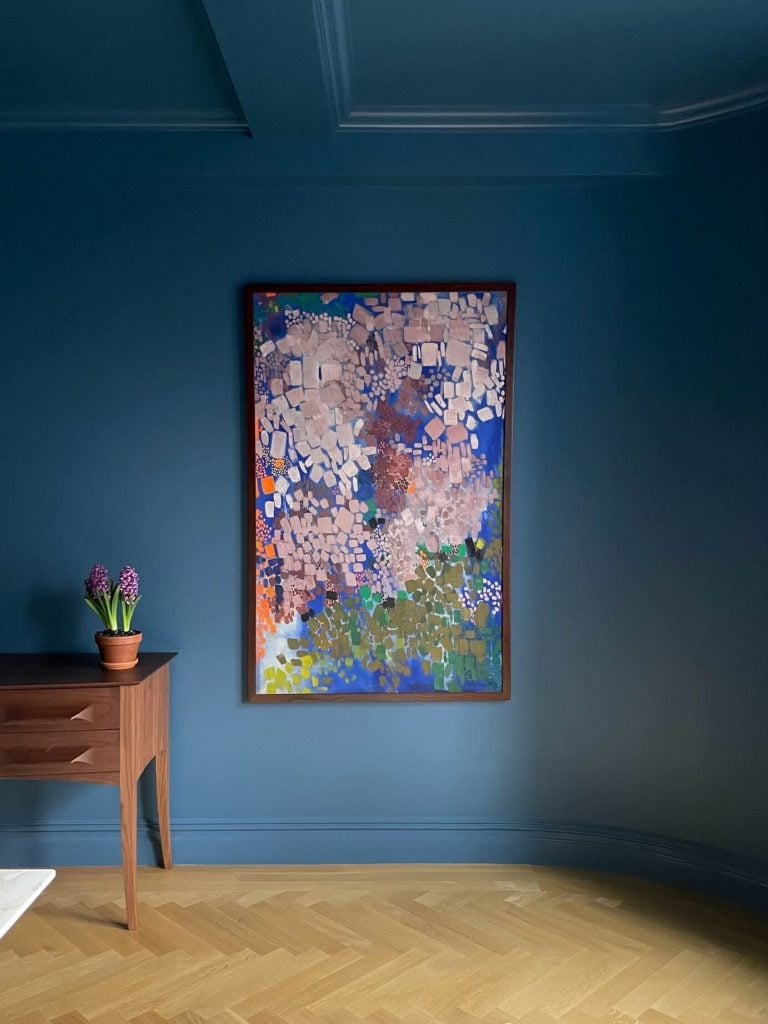
Lynne Drexler, Fading Lilac (1961). © Estate of Lynne Mapp Drexler. Courtesy of Saara Pritchard.
Pritchard was seduced by Drexler’s palette and determination. “She totally shunned the art world of New York because she felt so rejected by it, I guess,” Pritchard said. “But she still made all these paintings. To have that drive and that motivation was so inspirational to me. These are not the artworks of a tourist painter in Maine. “
The fact that Drexler brought all her work to Monhegan—and kept it there over decades—suggested to Pritchard that the artist knew that one day she’d get her due.
Those who have championed Drexler during the years of obscurity welcome the current moment. The size of the estate is unclear; Rancourt declined to say how many works there are.
“There’s enough to support her legacy,” Rancourt said. “Not just by selling paintings, but making sure that the sales of those paintings go back to something that will live on.”
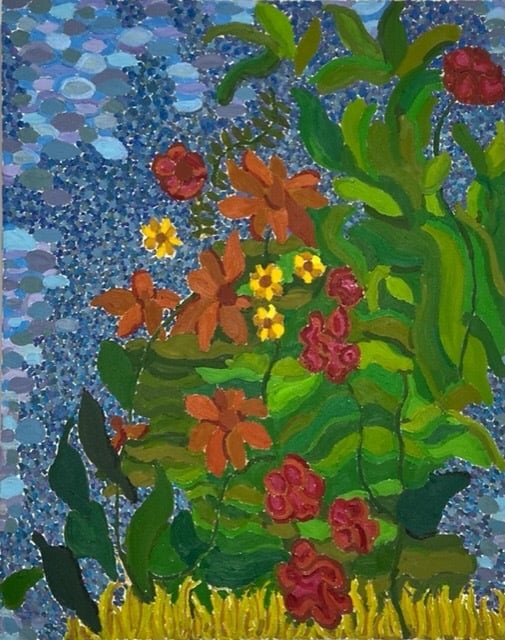
Lynne Drexler, Old Garden (1995). © The Estate of Lynne Mapp Drexler.
Berry Campbell is planning a solo exhibition with 20 or so paintings in October. It has raised prices by 20 percent, to the $75,000-to-$100,000 range, following Christie’s auction in March, according to Christine Berry, a partner.
A second Drexler painting from the Farnsworth Museum of Art will be offered at Christie’s in May. The proceeds from both works will help the museum acquire pieces by female artists and artists of color as well as to clean, restore, and stretch three canvases by Drexler in its collection.
“Wherever she is in the universe, Lynne Drexler is a happy camper,” Rancourt said. “She’s raising a glass and saying: ‘Told you!’”
